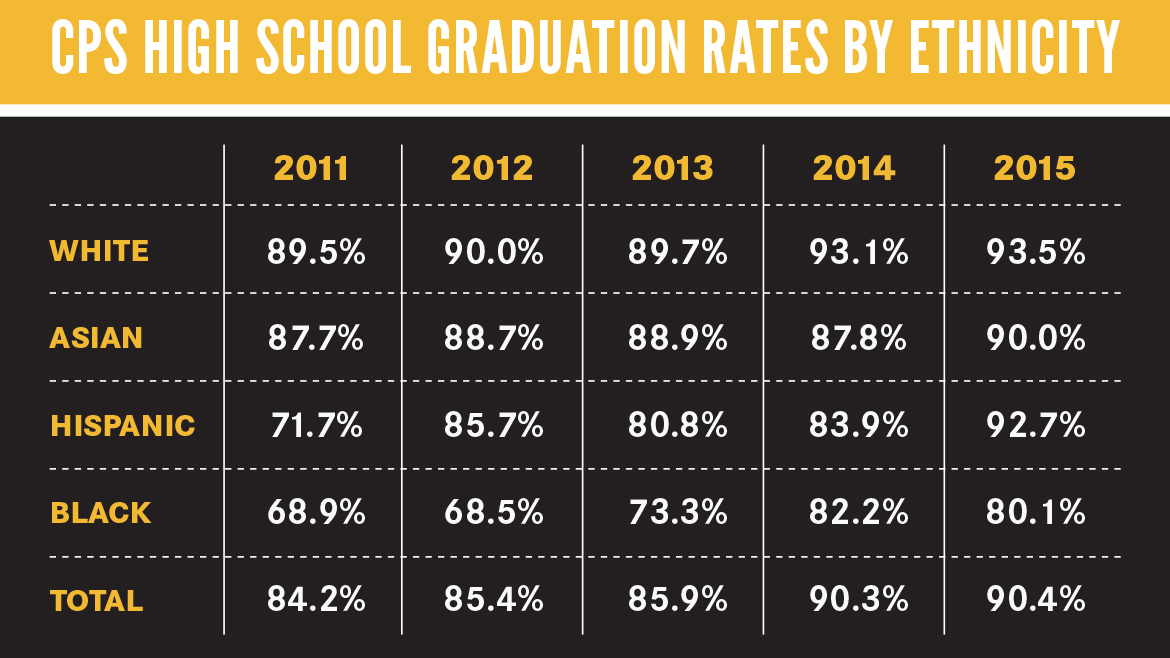Get Them Ready

The Cradle to Career Alliance bets on research and collaboration to improve the odds for Boone County children and, eventually, the state’s economy.
In 2013, after a period of planning and recruitment, a group of practitioners, agency representatives, college and university professors, school district personnel, teachers, librarians, and health professionals of Columbia came together to determine how they might address the educational disparities seen in race and socioeconomic status.
The coalition discovered Boone County ranks 426th out of 2,478 counties in helping poor children climb the income ladder, according to national support group Strive Together. To support quality education for Boone County children, the Cradle to Career Alliance, or C2CA, was born.
C2CA’s mission is to improve children’s successes and reducing education disparities. The alliance seeks to understand the structural barriers in education, such as unconscious and explicit bias. These barriers threaten the goal of the alliance: that every child can realize his or her potential, from cradle to career.
C2CA builds bridges and partnerships among schools, businesses, local governments, nonprofits, parents, and other interested parties – it’s the catalyst for collaboration between those groups. After building those bridges, C2CA gathers and analyzes data in order to identify practices to execute.
C2CA is not a direct service provider, or a source of funding. The alliance is passionate about bettering the community as a whole — which, for C2CA, starts with children’s education.
“For every dollar spent on early childhood, there is a $7 return,” current executive director Pam Conway says.
Strive Together: National Support
After looking at how different communities were addressing similar problems, the alliance applied for membership in the Strive Together Cradle to Career Network in 2014. Membership gave C2CA access to national resources, including research on the community’s specific needs.
C2CA is Missouri’s only Strive Together member. Strive Together launched in the Cincinnati and northern Kentucky area in 2006 to target the problem of being “program rich and systems poor,” meaning that the connection between schools and useful programs and resources to those schools needed to be strengthened.
Strive Together provides a framework program based on a community’s needs and encourages funding of statistically proven strategies. The organization is made up of 65 communities and two countries that are building cradle-to-career infrastructure using the Strive Together framework.
During its first five years, the national network recorded positive improvements in 40 of 53 educational outcomes, including a nine percent increase in kindergarten readiness, an 11 percent increase in high school graduation, and a 10 percent increase in college enrollment.
“It took a lot of pre-work [to become a member of the organization], including setting what our outcomes would be and determining community indicators in order to see if we are making progress,” Conway says. “Strive has many resources to support their members as they work to attain their goals.”
The network provides information and strategies, as well as interactions with and education from other communities with similar goals.
Strive members perform a self-assessment each year to mark their progress and set goals. The research conducted with the available data from Strive Together examines issues of race, health, mortality, teen childbearing, marital outcomes, and crime and incarcerations.
Team Effort
Conway has a passion for working with kids and eliminating disparities. C2CA has brought together a board full of people with similar passions.
The board members work toward meeting the alliance’s five goals, which are set nationally by Strive Together: all children ready for kindergarten; all children reading on level by third grade; smooth transitions for all students in and out of middle school; high school graduation, prepared for some type of post-secondary learning so that they are college- or career-ready; and all students completing their post-secondary program and being workforce-ready. Eventually, there will be a local committee formed to address each goal.
Teresa Maledy, regional president of Commerce Bank, has been a part of the alliance since 2012, in the group’s earliest stages. “The outcomes of the alliance are important,” Maledy says. “Cradle to Career can serve as a central hub for organizing community resources for academic success.”
Maledy has been involved in developing the organization’s infrastructure and generating community support of the program. This has involved talking with legislators about the importance of early childhood education and the C2CA.
“I think Cradle to Career can help all of us do a better job with workforce development,” Maledy says. “Workforce requirements might be constantly changing, but it helps when we start before kindergarten to get children ready to learn so they are successful throughout their academic lives and are career-ready or ready to go to college.”
C2CA wants business leaders to call on state and federal policy makers to invest in early child care and education. Investments in early learning allow community business leaders to work with the education system in teaching specific skills for in-demand jobs. This investment, hopefully, will then go on to generate sales of goods and services for Missouri businesses and create thousands of jobs in the state.
The shared vision of what the alliance could accomplish is what brought board and committee members together, including superintendent of Columbia Public Schools, Dr. Peter Stiepleman.
“It is less about what I do for the alliance and more about what the alliance does for me,” Stiepleman says. “They are a non-evaluative body that provides important feedback. They are what many call a critical friend.”
Stiepleman explains that when the alliance adopted the five goals of Strive Together, they began providing data to support other organizations and agencies.
CAN Do
C2CA works in committees called collaborative action networks, or CANs, to measure and work toward specific goals. CANs are made up of a cross-section of the community, from business owners to public school staff. Each group spends six to 12 months studying root causes, best practices, evidence-based practice, needed safety nets, and deterrents to success that impact children living in Boone County. Then, they establish a goal and the action steps they will take to reach it.
C2CA currently has two CANs at work: the Wise Early Childhood Collaborative Action Network (WEC CAN), and the High School Graduation Network (HS CAN).
WEC CAN’s primary goal is to increase the number of children ready for kindergarten by eight percent by 2020. In mid-July, the WEC CAN released their criteria for kindergarten readiness, which not only included specific academic goals, such as recognizing numbers and letters, but also benchmarks for social and emotional development. WEC CAN will start implementing action items, like making state-approved curriculum available for all child care providers; refining the set of standards for Boone County kindergarten readiness; communicating WEC CAN’s findings with child care providers, educators, and parents; and forming parent partnerships to support children.
The HS CAN is dedicated to ensuring all Boone County students graduate from high school and are either college- or career-ready. HS CAN is still in the research phase, determining deterrents to student success, safety net programs needed, and obstacles at-risk high school students face. The HS CAN plans to announce their goals and action plan by early 2017.

Strive Together has found that high school graduation rates are critical to the next step of getting a career. Graduates are more likely to acquire post-secondary education and earn at least $10,000 more annually than individuals who do not complete high school, and, over a lifetime, they earn over half a million dollars more than their counterparts without a diploma.
Unemployment rates for high school dropouts are higher than for high school graduates; if the number of high school dropouts in the 50 largest cities in the U.S. were cut in half, the extra earnings of those graduates would be $4.1 billion per year.
High school graduation has been shown to directly correlate to health, mortality, teen childbearing, marital outcomes, crime, and incarceration.
In 2015, C2CA received an equity fellowship as another opportunity for research. After successfully completing an application through Strive Together, three members of the Boone County alliance visited several cities around the U.S. for training alongside other members of the network and obtained research to help understand the specific needs of their community.
Community Effects
Through data collection and research, the CANs will determine which programs and infrastructure most impact the youth of Boone County. That information can be helpful when local businesses decide what programs to support.
“This data could be helpful when Commerce considers different charities and organizations for our annual contributions,” Maledy says. “As we move along and collect the data, we will find which programs have the best outcomes and we may choose to invest more in these programs.”
Commerce donates to almost all of the charities and organizations associated with children of Boone County, Maledy says, so in upcoming meetings, they will focus on the programs’ progress in order to use their resources for the betterment of the community.
Culture development also plays a role in children’s success, and C2CA incorporates as many cultural issues as possible into the organization’s scope, turning attention to issues such as the increase in refugees coming to live in Boone County.
“Our group represents a wide diversity of experiences, and we convene those experiences in order to meet our five goals,” Stiepleman says. “We’re always learning how to eliminate barriers for the children and the families that we serve. Culture is a big piece of this work.”
In Boone County, the alliance tries to create a culture where they support all children and try to find ways to level the playing field for those who don’t have many resources.
Though in the early stages of action, C2CA will continue to determine and document what works best for Boone County’s youth. Those actions and the data collected will go a long way for the future of the county’s economy.
“Eventually, it helps all of us,” Maledy says. “It helps our local economy if we are able to have a higher number of productive citizens paying into the tax base and able to be employed by the businesses we want to attract to our community.”


